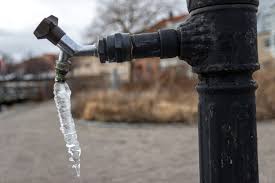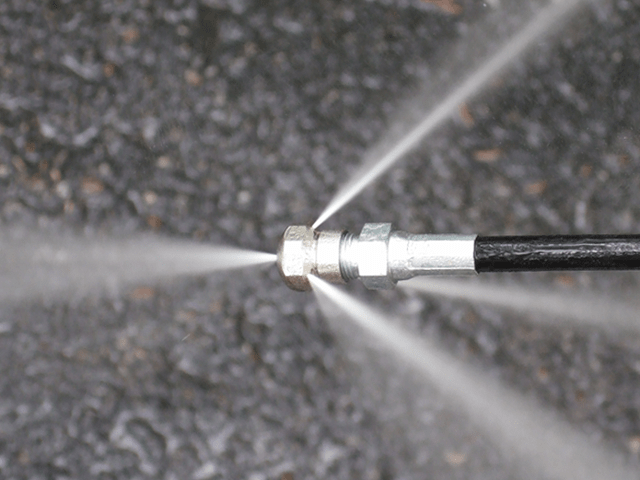Top Guide to Winterizing Pipes: 5 Hacks to Prevent Bursting in Cold Climates
Top Guide to Winterizing Pipes: 5 Hacks to Prevent Bursting in Cold Climates
Blog Article
Everybody maintains their unique way of thinking about Winterizing Your Pipes.

All homeowners who reside in warm environments have to do their best to winterize their pipelines. It is something you have to do throughout fall prior to deep winter truly starts. Failing to do so can mean calamity like icy, cracked, or ruptured pipes. Right here are some convenient winterizing hacks to keep your plumbing system shielded even if the weather condition outside is shocking.
Try a Hair Dryer or Warmth Gun
When your pipes are virtually freezing, your dependable hair dryer or warmth gun is a blessing. If the hot towels do not assist displace any type of working out ice in your pipelines, bowling hot air straight into them might aid. Do not make use of various other items that create straight fires like a strike lantern. This can result in a bigger calamity that you can not manage. You may end up damaging your pipes while trying to melt the ice. And in the future, you may also wind up melting your residence. Be cautious!
Open Up Cupboard Doors Hiding Plumbing
It would certainly be helpful to open cupboard doors that are camouflaging your pipelines when it's cold outside. As an example, they could be somewhere in your kitchen or restroom. This will permit the warm air from your heating system to circulate there. Therefore, you prevent these revealed pipelines from cold. Doing this little method can keep your pipes warm and restrict the potentially dangerous outcomes of freezing temperature levels.
Require Time to Cover Exposed Pipes
One great as well as very easy hack to heat up freezing pipes is to wrap them with cozy towels. You can also use pre-soaked towels in warm water, just don't neglect to wear protective gloves to safeguard your hands from the heat.
Turn On the Faucets
When the temperature level decreases and it appears as if the icy temperature level will last, it will assist to turn on your water both inside your home and outdoors. This will certainly keep the water streaming through your plumbing systems. Additionally, the motion will slow down the cold procedure. Notably, there's no requirement to turn it on full blast. You'll end up throwing away gallons of water by doing this. Instead, aim for about 5 declines per minute.
Shut Off Water When Pipelines are Frozen
Switch off the primary water shutoff right away if you see that your pipelines are completely icy or nearly nearing that stage. You will normally discover this in your basement or utility room near the heating system or the front wall closest to the street. Transform it off right away to prevent more damages.
Do not forget to shut outside water resources, as well, such as your connection for the garden home. Doing this will certainly prevent added water from filling your plumbing system. With even more water, more ice will load up, which will ultimately lead to break pipelines. If you are unclear about the state of your pipes this winter months, it is best to call a professional plumber for an examination. Taking this positive strategy can save you countless bucks in repairs.
All home owners that live in warm environments need to do their finest to winterize their pipelines. Failure to do so can lead to disaster like frozen, fractured, or burst pipelines. If the warm towels do not assist dislodge any type of working out ice in your pipelines, bowling hot air straight into them might assist. Turn off the major water shutoff promptly if you see that your pipes are entirely icy or practically nearing that phase. With even more water, more ice will pile up, which will at some point lead to burst pipelines.
PREVENT YOUR PIPES FROM FREEZING THIS WINTER
A Leading Cause of Property Damage
When the weather is taking a deep nose dive into the cold dreary days, the risk of your pipes freezing and potentially bursting skyrockets. Unfortunately, during these cold dreary months, burst pipes are the most common denominator for property damage. The pipes that are most at the risk are those that are in areas where it is most cold in your home. For instance, pipes located in interior places such as basements, attics, and your garage. Unfortunately, that doesn’t mean that the pipes running through your cabinets or exterior walls can’t freeze. Good news, however, is that you can do things to help prevent pipes from freezing.
How to Prevent Pipes From Freezing
Once the temperature starts to drop during the winter, you should be taking the proper measures needed to ensure that your pipes stay warm and that there is circulation of water through them. Some steps that experts may recommend could go against your better judgement when it comes to saving water and heat. However, it would go without saying that when expenses are compared, damaged pipes could put a bigger dent in your wallet than a water bill.
What Can I Do?
Keep your garage door closed. This is very important, especially if you have water supply lines running through your garage. Open your kitchen and bathroom cabinets to allow warm air to circulate through them. Allow air circulation throughout your home. Keeping the interior doors open will once again allow the warm air to circulate inside your home. Ensure your thermostat is running the same temperature throughout the night and day. If you plan to be away from home during the cold months, set your temperature no lower than 55° F. This should provide enough heat to keep the pipes warm and prevent any remaining water inside the pipes from freezing. For more of a long-term solution, add insulation to attics, basement, and other crawl spaces around your home. By allowing your faucet to drip, it will alleviate pressure in the system. This is important because the pressure that is created between the blockage and the faucet can potentially cause the pipes to burst. Allowing the faucet to drip will prevent the pressure from building up, therefore keeping the pipes from bursting. Seal any cracks, openings, and crawl spaces around your home to prevent cold air from coming inside. This keeps your pipes-not to mention your home-warmer and less susceptible to issues caused by freezing temperatures. For the pipes in your home that are easily accessible, applying electrical tape to them might prevent them from freezing over. This is a quick fix, as you can apply the tape directly to the pipe. There are two options for heating tapes. One turns on and off by itself when it senses heat is needed. The other type of heating tape needs to be applied when heat is needed and removed when not necessary. If you have exposed pipes in your home, you can check this website to take a look at a few options that would be available at a shop near you.

As an avid reader on Winterizing Your Pipes, I was thinking sharing that piece of content was really useful. Are you aware of somebody who is very much interested in the subject? Please feel free to share it. Thank-you for your time spent reading it.
Call Today Report this page